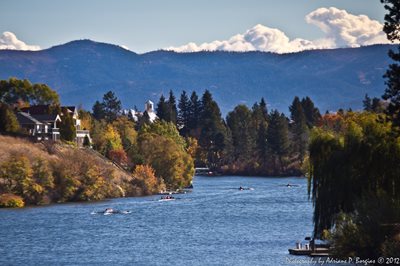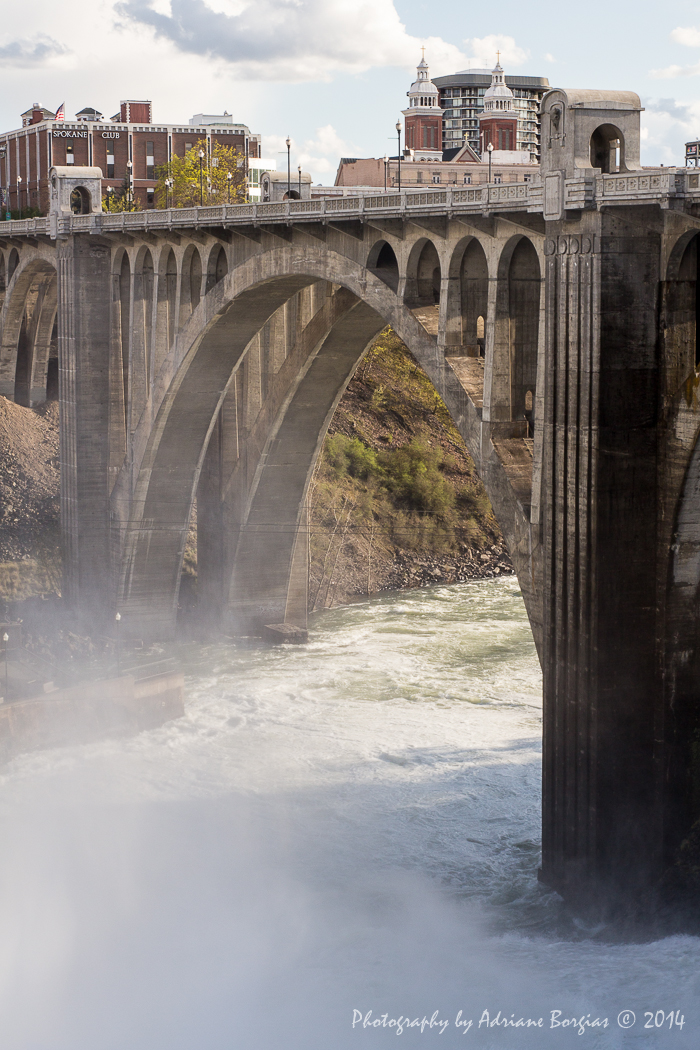
The term parts per quadrillion describes a way to measure small amounts. Really small amounts. Miniscule.
Lay a penny on the ground and compare it — by area — to the entire state of Washington. That is equal to one part per quadrillion.
Why do we care about such tiny measurements?
Many toxic chemicals like polychlorinated biphenyls (PCBs) remain in the environment and build up over time in fish, animals and people. They can cause adverse health effects, including cancer and harm to immune, nervous, and reproductive systems. So finding and removing even the smallest amount of PCBs can make a big difference in water quality.
Addressing this big challenge in Spokane
In the Spokane River, small measurements have always been a big challenge. Clean water requirements include strict limitations on pollutants like phosphorus and PCBs.
In 2016, new requirements from the Environmental Protection Agency made the challenge bigger by making the standard smaller. The water quality standard changed from 170 parts per quadrillion to seven parts per quadrillion.
New clean water permits for Spokane River
View of Spokane River Courtesy of Adriane Borgias 2014
This is complicated because small amounts of PCBs difficult to measure and wastewater discharges aren’t the only source of PCBs to the river. Other sources appear to impact the river, including those from cleanup sites regulated by the Model Toxics Control Act and other nonpoint sources that aren’t covered by clean water permits.
We also have new tools in our water quality rules for issuing clean water permits — tools that we’ve never used before. Recognizing that it will take more than new clean water permits to achieve a clean Spokane River, we took a step back to evaluate any and all potential options.
The task was to develop a strategy that will ultimately get us to our goal of meeting the water quality standard.
Tackling the challenge by looking at the whole problem
The Spokane River community has a long history of adopting a collaborative approach to solving water quality problems. They haven’t backed away from this challenge.
We’ve been working together with those across the watershed as one a river community since 2012 to find and reduce sources of PCBs to the river. This has taken place through the work of the Spokane River Regional Toxics Task Force, and the group has made real progress.
We want to keep the momentum going and develop practical, protective permits.
We took some time to listen and heard strong support on the concept of adaptive management. That means achieving clean water by making step-by-step improvements while continuing to find and reduce sources of PCBs to the river.
Our strategy includes steps to keep moving forward on cleaning up the river and address all sources of PCBs – including cleanup sites – while allowing additional time to work through remaining questions about the best way to use the new permit tools.
Learn more
You can learn about the new tools for issuing permits and our approach for meeting clean water requirements for the Spokane River at our upcoming workshop.
Please join us:
Wednesday, March 14, 2018 at 6:00 p.m.
Liberty Lake Sewer and Water District
22510 E. Mission Ave.
Liberty Lake, WA 99019
Learn about our work improving the Spokane River on our website.



